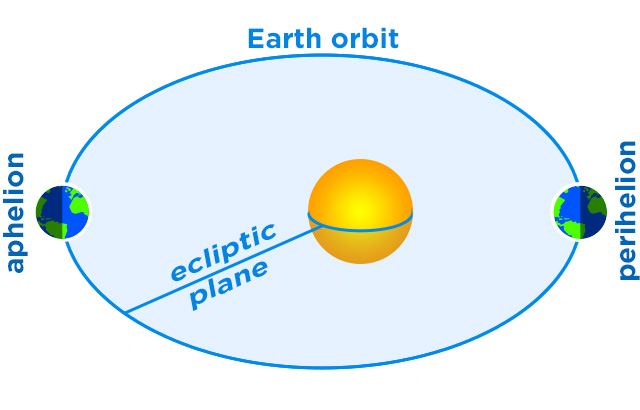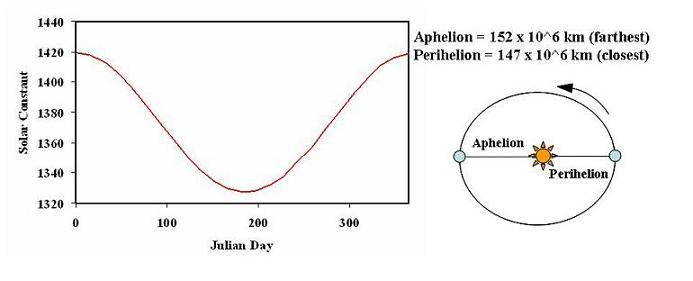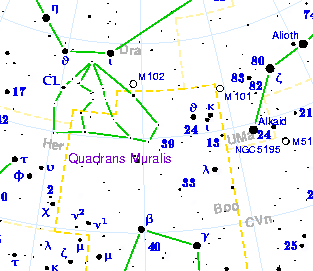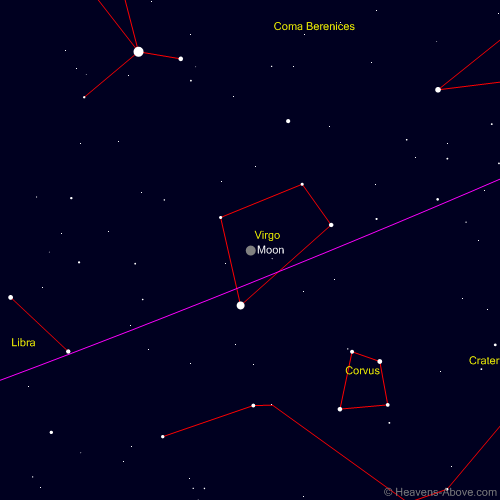THE SOUTHWORTH PLANETARIUM
207-780-4249 www.usm.maine.edu/planet
70 Falmouth Street Portland, Maine 04103
43.6667° N 70.2667° W
Altitude: 10 feet below sea level
Founded January 1970
Julian Date: 2459218.18
2020-2021: LXIV
THE DAILY ASTRONOMER
Monday, January 4, 2021
Monday, January 4, 2021
January 2021 Night Sky Calendar Part II
Welcome back! We hope you have recovered sufficiently from your revels -or, at least, from the virtual revels you attended remotely- prior to the beginning of a new remote astronomy course. Of course, you will have two more days to convalesce because we will first be offering the two part January 2021 Night Sky Calendar before starting the "Exploratory Planetarium." At or near the beginning of each month, the DA will post a monthly sky calendar. This calendar includes what we believe to be the month's most interesting celestial events. Due to the length, we have separated this calendar into two parts. This month, the split will be uneven: fewer days in Part I than II due to the greater amount of information contained within the former section.
SATURDAY, JANUARY 2: EARTH AT PERIHELION
We are now moving away from the Sun. On January 2, Earth was at perihelion, its point of least distance from the Sun. Throughout the year, our planet travels along an elliptical, not circular orbit. What's the difference?
- A circle is a closed curve consisting of points equidistant from the center.
- An ellipse is a closed curve inside of which one finds two foci. The straight line distance from one focus to any point on the curve and then to the other focus is a constant. If the two foci occupy the same point, the ellipse becomes a circle.
If Earth's orbit were circular, the planet's distance from the Sun would be constant. However, as it travels along an ellipse, Earth's distance varies continually throughout the year. Earth reaches perihelion in early January and aphelion (the point of greatest distance) in early July.

On January 2nd, Earth's distance from the Sun was 0.983257 AU, or 147.1 kilometers. [AU = Astronomical unit. Defined as Earth's average distance from the Sun, an astronomical unit precisely equals 149,597,870.7 kilometers. (92,955,806 miles) . ]
The distance difference between perihelion and aphelion amounts to approximately three million miles. How much does that change affect the weather? Astronomers define the "solar constant" as the intensity of solar radiation striking Earth's atmosphere. Measured in units of kiloWatts per square meter, the solar constant's average value is 1377 kW/m^2. However, as we can see in the graph below, the solar constant value changes in response to Earth's varying heliocentric distance:

Although the solar constant is reduced when the Sun is at aphelion and increased when it is at perihelion, the change is not enough to affect the weather.
Earth will slowly move away from the Sun until the planet reaches aphelion on July 5 at 6;27 p.m.
SUNDAY, JANUARY 3: QUADRANTID METEOR SHOWER PEAKS
Well, yes, we understand that you are receiving this article on the day after the peak. However, as the Quadrantid Meteor Shower is active between December 28 - January 12, many of its meteors can still be viewed during the next week. Also, we can't in good conscience neglect the year's first major meteor shower. If nothing else, it presents us with a perfect opportunity to discuss the science of meteor showers.
First, meteors are not objects. Instead, they are the lights produced when meteoroids, pieces of cometary or asteroidal flotsam, infiltrate the atmosphere. The rapidly descending particle excites the atmospheric atoms within its vicinity. Electrons within an excited atom are elevated to higher energy levels. The electrons then emit light when they return to their original energy state. We perceive these light emissions as meteors.
While we can see one meteor every 6 - 10 minutes on average, during certain times of year, we experience meteor showers. These showers occur when Earth passes through a stream of particles emitted by either a comet or an asteroid. between December 28 - January 12, Earth moves through debris cast off by 2003 EH1. Though described as an asteroid, 2003 EH1 could well be an extinct comet, defined as a comet that no longer sports tails when passing close to the Sun.
Having an extinct comet as the parent body of the Quadrantids is quite appropriate, as the constellation for which the meteor shower is named is likewise extinct. Quadrans Muralis, created by French astronomer Jerome LaLande (1732-1807), depicted a wall mounted quadrant similar to the one he used to develop celestial charts.

Although Johannes Bode (1747-1826) included the pattern in his 1801 Uranometria, the International Astronomical Union did not include Quadrans Muralis in its list of 88 official constellations. Consequently, the constellation is no longer recognized. The Quadrans Muralis region is around the constellation now designated as Bootes. The radiant, the point from which the meteors appear to originate, is seen in the image below. Bootes is the sheepherder located just off the Big Dipper's Handle.

While the peak stream (the densest part through which we pass during the peak) is thin, we can still see about 15 - 25 meteors an hour from the Quadrantids over the course the next few nights. The best time to watch for the Quadrantids is after midnight, the time when our part of Earth is turning into the meteoroid stream.
Now that we've started 2021, we'll list this year's major meteor showers. We'll experience quite a gap between the Quadrantids and the Lyrids and another between the Eta Aquarids and Perseids. However, one can observe sporadic meteors on any night of the year.
- Quadrantids December 28 - January 12; Peak Jan 3
- Lyrids April 16 - 30; Peak April 21
- Eta Aquarids April 19 - May 28; Peak May 5
- Perseids July 17 - August 26; Peak August 11
- Draconids October 6 - 10; Peak October 8
- Orionids October 2 - November 7; October 21
- Leonids November 6 - 30; Peak November 17
- Geminids December 4 - 17 ; Peak December 14
- Ursids December 17 - 26; Peak December 22
MONDAY, JANUARY 4: LATEST SUNRISE
Yes, it is true: the daylight duration has been increasing since the winter solstice. On December 21st, the Sun was above the horizon for 8 hours and 55 minutes. On January 4th, the Sun will be above the horizon for 9 hours and 3 minutes. However, the date of the earliest sunset and latest sunrise do not occur on the solstice. At this latitude, the earliest sunset date is December 9th; the latest sunrise date is January 4th. The sun will rise at 7:15 a.m. today. From now until mid June, the Sun rise times will decrease.
Yes, it is true: the daylight duration has been increasing since the winter solstice. On December 21st, the Sun was above the horizon for 8 hours and 55 minutes. On January 4th, the Sun will be above the horizon for 9 hours and 3 minutes. However, the date of the earliest sunset and latest sunrise do not occur on the solstice. At this latitude, the earliest sunset date is December 9th; the latest sunrise date is January 4th. The sun will rise at 7:15 a.m. today. From now until mid June, the Sun rise times will decrease.
WEDNESDAY, JANUARY 6: LAST QUARTER MOON
Find the last quarter moon within the constellation Virgo the Maiden tonight.

SATURDAY, JANUARY 9: MOON AT PERIGEE
Since Earth was at perihelion earlier this month, it seems appropriate to mention that the moon will be at perigee (its closest distance from Earth) today. The moon will be 367,387 kilometers from Earth at this perihelion. Like Earth and the other planets, the moon travels along an elliptical orbit so that its distance from our planet continually varies from its least distance (perigee) to its greatest distance (apogee). The moon will be at apogee on January 21st.
Since Earth was at perihelion earlier this month, it seems appropriate to mention that the moon will be at perigee (its closest distance from Earth) today. The moon will be 367,387 kilometers from Earth at this perihelion. Like Earth and the other planets, the moon travels along an elliptical orbit so that its distance from our planet continually varies from its least distance (perigee) to its greatest distance (apogee). The moon will be at apogee on January 21st.
Part II tomorrow.
It is a pleasure to see you all in class again!
To subscribe or unsubscribe from the Daily Astronomer: